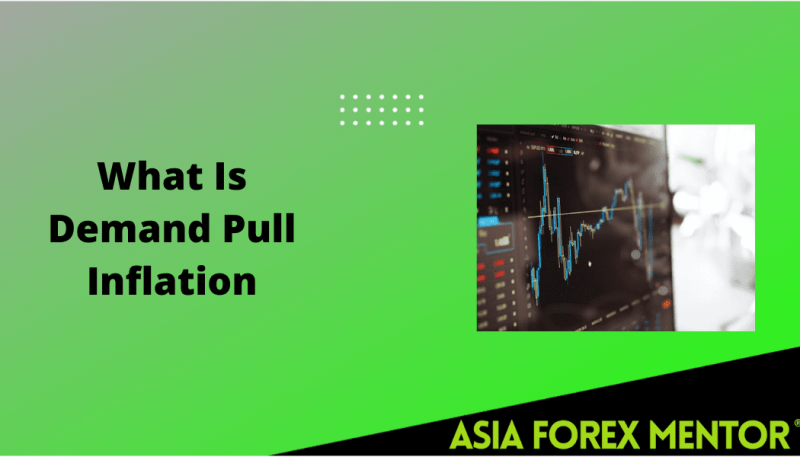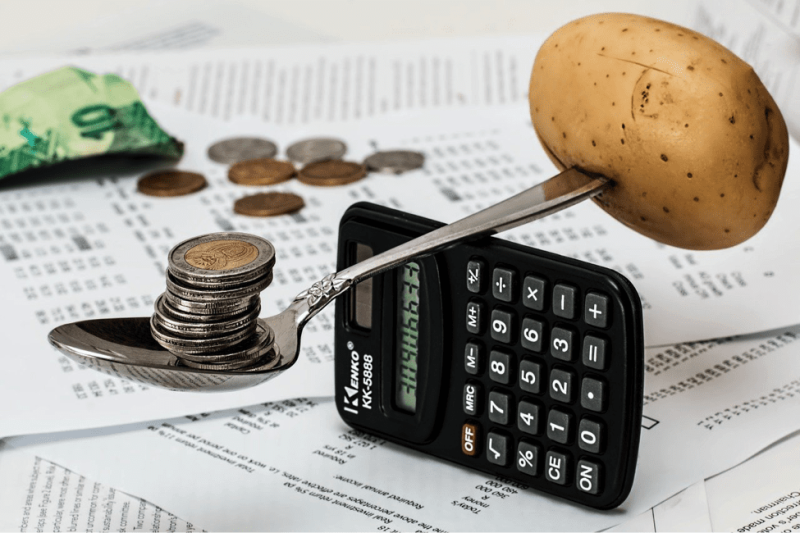
Inflation is a scary word, but there are several types, and we are going to examine demand-pull inflation, which is a result of a rise in demand from the consumer. Because of the reduced supply of a product or service, the natural reaction is for companies to raise prices to satisfy the expanding interest. This is a typical reason for inflation.

It seems simple, but economists have taken a serious look at the subject and developed the demand-pull theory. The idea behind the theory is to describe inflation and show the disparity between supply and demand. Expressed simply prices rise when there’s more interest for a specific product, and the market cannot respond with adequate supply.
Also Read: How To Profit From Inflation?
Contents
- Causes of Demand-Pull Inflation
- Effects of Demand-Pull Inflation
- Controlling Demand-Pull Inflation
- Difference Between Demand-Pull and Other Forms of Inflation
- Conclusion
- FAQs
Causes of Demand-Pull Inflation
We already covered the basic concept of what constitutes inflation, but it doesn’t happen out of the blue. Numerous factors can initiate the process of price rise. We can look at six commonly accepted reasons that lead to demand-pull inflation.
Growing Economy
The good times manifest as an increase in spending. People feel confident that the job market is stable, and are ready to use their more disposable income and test the limits of their credit cards. But also take bank loans to finance home purchases and replace old cars.
This excess in demand is not a good sign for the economy if the manufacturers are not ready to respond with the necessary supply. This imbalance creates a price increase.
Fear of Inflation
Many economists believe inflation is psychological, in other words, the expectation that prices will rise, results in that fear coming true. People start buying intensely when there is news about political and economic turmoil.
They decide to stockpile goods, attempting to avoid future price spikes. This attitude creates an imbalance in the economy, producing inflation. Most governments try to control inflation by modifying the interest rate and implementing other policies to create healthy growth in the economy.
Expansion of the Money Supply
When a difficult position and the economy may take a turn for the worst, or debt is piling up, the government prefers to solve its problem by unleashing the money printing presses. Creating an environment where there is too much money pursue too few goods. The oversupply of money is the main reason for hyperinflation.
Discretionary Fiscal Policy
The government creates the monetary and fiscal policy, and influences the supply and demand dynamic. When more funds get allocated to the defense department, the price of military hardware rises.
If the government decides to reduce taxes, that means more funds at the disposal of citizens that will go out and spend on products and services, in turn, creating demand. Naturally, if this interest for goods surpasses the current supply, the result is inflation. Reduced mortgage interest rates have traditionally driven the demand for housing.
Effective Advertisement
Marketing is a useful tool for attracting customers, and a well-prepped advertisement campaign can generate an unexpectedly high demand for a specific product. This is a form of asset inflation.
Smartphones are one example, when a new model gets launched, the supply gets balanced with high prices. Frequently consumers are not discouraged by the cost, because they believe the return on their investment is justifiable.
Technological Innovation
Disruptive technologies bring benefits to consumers, but it also creates new price spikes. Consumers require products that can benefit them. When a new electric car or a mobile phone hits the market, a certain segment of the population must have them, and the readiness to pay any price creates inflation.
Effects of Demand-Pull Inflation
Demand-pull inflation can get caused by various factors, but the result is the same. Higher prices are generated by the disruption of the normal dynamic, and supply cannot respond to consumer demand. Several of the effects of inflation include:
- Consumer’s purchasing power gets reduced
- Influences currency rates
- Promotes spending to avoid further inflation
- The cost of loans rises
- Continued inflation growth
- Demand-Pull Inflation Example
Let’s imagine that the economy is achieving record figures, economists are optimistic about the future, considering the large output and the fact that interest and employment rates are at an all-time low.
This all signals to the government that this is the perfect opportunity to implement its ecological policies and reduce the carbon footprint. The project moves on with a tax break for buyers of electric vehicles. Manufacturers are thrilled by the incentive. But do not anticipate the consumer’s response that massively lines up to buy their cars.
The sudden demand catches big brands unprepared to respond to every order, and the logical move is to increase the price. That way, making the available inventory accessible to those that can pay the price.
When the majority are gainfully employed, and opportunities for getting loans are abundant, consumer spending goes over the supply, and demand-pull inflation occurs.
Also Read: Everything About Investment Planning
Controlling Demand-Pull Inflation
Financial institutions perceive inflation as their arch enemy, and actively work on keeping it under control through various methods employed by the central bank. Some tactics include increased interest rates, and discouraging consumers from purchasing new homes or products. This strategy makes it possible for the market to gain more time to restore the balance between supply and demand.
Alternative options include increasing taxes and a reduction in government investments. When exploring methods to manage demand-pull inflation, it’s crucial to account for the different factors that can trigger inflation and select the best approach to prevent or contain the rise in prices.
In a globalized economy, the problems of demand-pull inflation get alleviated by the international manufacturing capacities that offset the discrepancy in supply and demand.
Difference Between Demand-Pull and Other Forms of Inflation
Inflation can show its face as demand-pull or cost-push inflation. However, there are two other forms of inflation, both relate to the money supply. In the first case, there is an increase, for example too many dollars in circulation, while in the second case, the money supply decreases, but this is a rare circumstance.
Cost-push inflation occurs when there is a decline in aggregate supply which happens because the production costs for a certain product have risen. When manufacturing gets more costly, that translates to higher prices for the final product. If the manufacture of silicon chips gets more costly, that will result in more pricey computers.
The other two types are more relatable to demand-pull inflation because they depend on the changes in the aggregate demand of the money supply, reacting to a rising or declining interest.
Conclusion
Demand-pull inflation stems from several factors, such as economic growth that stimulates both personal and government spending. The appearance of revolutionary new technology or the increase in the money supply can also trigger inflation. Typically it’s a situation of demand outstripping supply.
Several options get implemented by government institutions to correct the price level and counter factors that are causing inflation. The bottom line demand-pull inflation gets regulated globally by Central banks and the Federal Reserve in the USA is the main financial institution that works on controlling the inflation rate.
This is a crucial economic concept that investors must learn to more easily navigate the market. Understanding the effects of demand-pull inflation on the economy can enable the protection of investments.
FAQs
What is the best example of demand-pull inflation?
A new mobile device gets released and interest is skyrocketing, but the manufacturer cannot keep up with orders. The company increases the price to balance the demand with the supply.
Why does demand-pull inflation occur?
Demand-pull inflation happens as a result of the imbalance between demand and supply.
What is demand-pull and cost-pull inflation?
Demand-pull occurs if supply cannot keep up with demand, but cost pull inflation happens when the expense of manufacturing a product raises, because of raw materials, energy costs, or higher wages.
What are the effects of demand-pull inflation?
The effects of demand-pull inflation are a reduction in purchasing power among the population, borrowing is more difficult, an unfavorable currency rate, and sustained inflation.



